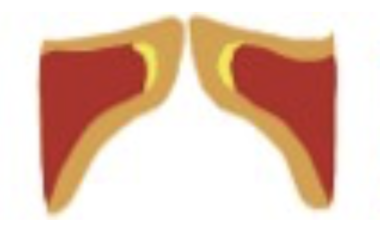Singing High- The Upper Register Modes


In Step Three of the Eight Steps of Vocal Development program at Sing Like a Star Studios, our focus is on the upper register- the notes above the primo passaggio. We sing high notes in our upper register. In upper register phonation, the vocal folds are longer, thinner, and tauter, and the vocal folds meet higher on the depth of the fold.
This area of the voice has traditionally had many different names such as head voice, falsetto, loft, M2, light mechanism, etc.
Terminology in the world of voice can be confusing; the use of the term falsetto, for example, means different things to different pedagogues. In much of the traditional literature, the word falsetto meant anything above the primo passaggio for males.
In contemporary singing, falsetto can be defined as breathy and anemic singing caused by inadequate vocal fold adduction and low closed quotient.
Another example: mix in a contemporary male tenor would be termed head voice in the classical world.
No wonder singers are confused!
The trained contemporary singer can produce four different qualities or modes in the upper register (M2 or CT- dominant phonation) based on factors such as onset, vocal fold adduction, TA/CT activity, closed quotient, and relative strength of various harmonics.
These modes are, from weakest to strongest: falsetto, head, fluty mix, and brassy mix.
Falsetto is weak and breathy, with inefficient fold adduction and low closed quotient; only the epithelium of the vocal fold is in vibration. The muscular body of the fold, comprised of the thyroarytenoid and vocalis muscles, is quiescent.
The vocal folds do not adduct efficiently, closed quotient is low, and the sound is breathy and anemic due to the lack of firm glottal closure (adduction). There is a permanent orifice between the vocal folds through with air escapes.
The sound is anemic and soft. Falsetto is weak and breathy and cannot connect to the lower register without an abrupt change in vocal quality. A hypo-adducted, breathy, aspirate onset can produce falsetto because the folds are abducted.

Images by Reinhard [Public domain], via Wikimedia Commons from Wikimedia Commons
Head
This is the whoop sound of the classically trained soprano. It’s the first sound we use in Step 3- Activating and Developing the Upper Register- the High Call w[u]-[i]. A rounded mouth shape, easy onset, large pharyngeal space, high tongue, lifted soft palate, back rounded vowels like [u] encourage this sound.
Fluty Mix
The fluty mix requires moderate vocal fold adduction and has less intensity, edge, and brilliance than brassy mix. A rounded mouth shape, large pharyngeal space, high tongue, lifted soft palate, closed and back vowels encourage this sound.
Brassy Mix
The brassy Mix requires some TA muscle bracing against the CT muscles, higher closed quotient, firm glottal onset, increased subglottal air pressure, front, open vowels, and a flatter tongue. The brassy mix is capable of imitating the timbre and power of the lower register quite convincingly.
The brassy mix is powerful, edgy, and ringing. It has a natural quality resembling speech, blending seamlessly from the lower register to the upper register. This is the sound of contemporary pop, R & B, and country singers, along with musical theatre singers who want to sound like they are belting.

If you would like to learn more about your voice AND learn to sing from home for less than you probably spend for lattes every month, check out our amazing YOU can Sing Like a Star online subscription courses for singers and voice teachers.
You can learn to sing with a self-study method- IF it's the right method. The ONLY method that can take you from beginner to professional is the YOU can Sing Like a Star online subscription course with over 600 recorded exercises.
This is the best method available and the ONLY method that takes you all the way from beginner to professional singer- for far less than the cost of in-person voice lessons!
Check this amazing course out at YOU can Sing Like a Star online subscription course.
If you are a voice teacher who wants to up your game, check out the YOU can be a Successful Voice Teacher online subscription course
With over 600 recorded exercises, including Riffs and Runs- Style, you don't need to be a great pianist or vocal stylist to be a great teacher!



